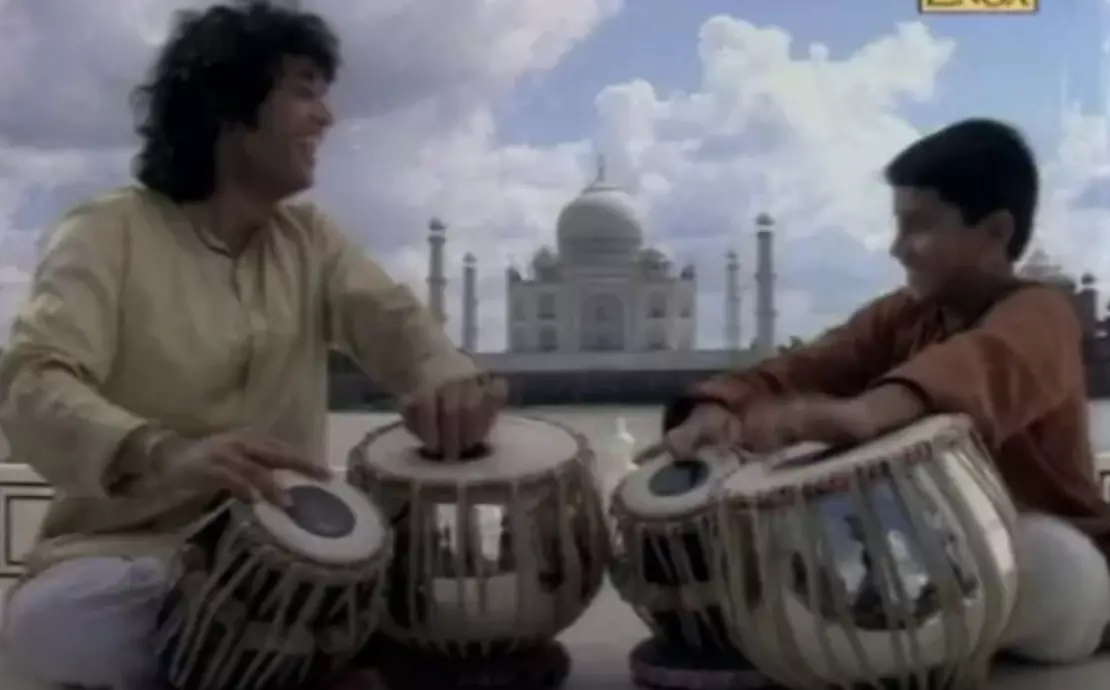'Wah Taj': The story behind Ustad Zakir Hussain's timeless tea Ad campaign
'Wah Taj': The story behind Ustad Zakir Hussain's timeless tea Ad campaign

The world mourns the loss of Ustad Zakir Hussain, who has passed away at 73. As the final curtain falls on a six-decade-long journey that transformed the tabla from an accompanying instrument to a celebrated art form, we remember the maestro whose captivating persona was as magical as the music he created. For many, the first memory of Ustad Zakir Hussain is not from a concert but from the iconic 1990s television advertisement for Brooke Bond Taj Mahal tea. This ad was more than a marketing success; it became a shared memory for an entire generation, immortalizing the maestro with the backdrop of the Taj Mahal and the legendary phrase, "Wah Ustad nahi, wah Taj boliye."
The Creation of a Timeless Ad
Brooke Bond Taj Mahal tea was launched in Kolkata in 1966. Initially, the brand featured celebrities like Zeenat Aman and Malavika Tiwari in its advertisements, aiming to position the tea as an aspirational product. By the 1980s, the brand noticed its growing popularity among the middle class and decided to revamp its image to appeal to a broader consumer base. Hindustan Thompson Associates (HTA) was tasked with crafting this new brand image, and KS Chakravarthy, a copywriter and tabla enthusiast, identified Ustad Zakir Hussain as the perfect ambassador. Delighted with the opportunity, the maestro reportedly flew from San Francisco to Agra at his own expense.
The ad's script was straightforward: just as Ustad Zakir Hussain dedicated hours to perfecting his art, the makers of Taj Mahal tea meticulously tested numerous varieties to achieve the perfect blend and aroma. Following the economic reforms of 1991, cable TV brought the Ustad's smile into Indian homes, boosting the tea brand's popularity. Over time, other faces appeared in the campaign, but Ustad Zakir Hussain remained its enduring icon.
When The Ustad Got Food As Fee
In a 1998 interview with Simi Garewal, Ustad Zakir Hussain shared that his mother, Bavi Begam, did not initially want him to pursue a career in music. At the time, music was not seen as a viable profession, and she had witnessed him return from concerts with only packed food as payment. She wanted him to have a better life and encouraged him to focus on his studies. Despite this, his father, the legendary Ustad Alla Rakha, remained his idol and mentor.
Ustad Zakir Hussain recalled writing letters on behalf of his father, offering his own services when his father was unavailable. Despite his young age, he often found himself performing at concerts, sometimes surprising audiences who expected an older musician. He even recounted a childhood incident where he planned to run away with a caretaker, intending to make a living through music.
The Jeans And Boombox Phase
When asked why he went to the US at 18, Ustad Zakir Hussain explained his desire to embrace Western culture. He wanted to wear jeans, become a rock and roll star, and make a million dollars. However, life in the US was challenging, and he lived on just 25 dollars a week, surviving on a single pot of vegetable curry. Despite these hardships, he played a pivotal role in elevating the tabla to an art form, building on the hard work of previous generations.
Reflecting on his struggles, he noted that Indian classical music was once considered a second-class profession, with tabla players even lower in status. Despite playing with musicians who were not widely recognized, Ustad Zakir Hussain became a prominent figure, transforming the perception of the tabla and its players.
Ustad Zakir Hussain's legacy extends beyond his music. His contributions to the world of Indian classical music and his unforgettable presence in the Taj Mahal tea ad will forever be cherished. As we remember the maestro, we say, "Wah Ustad, wah Taj."

